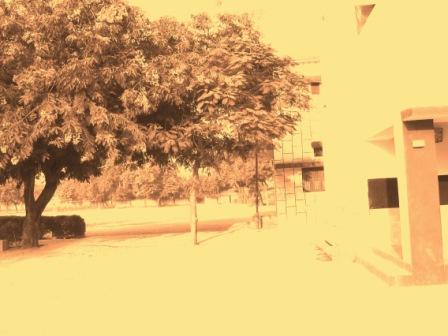That Is Sight
[By Asghar Gondvi. Translated from the Urdu by Siyaah]
That is sight, which goes beyond this existence and the next
And yet falters when it falls on a radiant face [1]
How can sight not falter on that beauty- how can it not?
That turns at times to a blossom, and is at times a face [2]
I stride on- laughing, playing with the waves of tragedies
If there were ease, life would be difficult indeed... [3]
Translator's Notes
[1] Kaun-o-makaan: literally, this Persian expression refers to "all existence", but the implication is to include this existence and the next, based on earlier classical usage by the Persian sufi poet, Hafez;
Ru-e-taabaan: face that is radiant / emits heat or light. I interpret it as an expression of beauty that blinds one to all else.
[2]rukhsaar: face;
"(Nazar) us...par thahre" literally means "to stay put", but the meaning of the expression is lost in English. The implication is more closely captured by "to not falter".
[3]mauj-e-hawaadis: literally, waves of accidents/misfortunes/tragedies;
Dushwar: difficult to the point of being almost impossible.
Subscribe to:
Post Comments (Atom)






3 comments:
This must have been difficult to translate.
I do not know how faithful a translator must choose to be to the original. It is an open question I guess and probably something of a conscious and personal decision when one embarks upon any translation process.
Having said that let me propose an alternate re-ordering and some changes for the first three lines.
Which goes beyond this existence and the next
And yet falters when it falls on a radiant face - that is sight [1]
How can it not falter on that beauty- how can it not?
That turns at times to a blossom, and is at times a face [2]
Do humor me for a while; I cannot help but try and apply a bit of linguistics that I know, to this.
In [1], That is sight coming in the beginning was bothering me a bit. Since it contains the relative pronoun that equivalent to the wo of Hindi-Urdu. Now this is not a problem in Hindi-Urdu because we have jo-wo relative clauses, where both pronouns refer back to the same relative clause but the use of two relative pronouns is rare in English and perhaps only surfaces in poetry - where word order can be played around with a bit - or in translation. So I think this translation would work better if that is sight comes at the end. So that the concept or idea is introduced before using a pronoun for it.
In [2] not much except that the use of sight again in immediate vicinity does not read well, so one can use the pronoun it to avoid that.
I don't know if syntactic analysis can ever really be applied to poetry, but then I see no harm in trying.
Sorry for the inexcusably long comment :)
Arfi:
This is why it is great to have you visiting this site often!
I like your improvements...ultimately that is why I do these translations in a blog format, to get feedback from everyone.
I struggled with "That is sight" for weeks...finally thought I could take some poetic license...but your version reads really well.
In [2] as well, "it" reads better. This highlights a key tension in Urdu and English poetry: In the Urdu ghazal, typically each couplet is stand alone and can be recited separately with complete meaning, whereas in English it is a continuation.
Do keep sharing your linguistics insights here!
err i read arfi's comment twice before giving up on the linguistics... but arfi's version feels good to my un-linguistic-trained brain too :). good going with translations siyaah. translating a poem summons in me a new kind of respect for the person who wrote it
Post a Comment